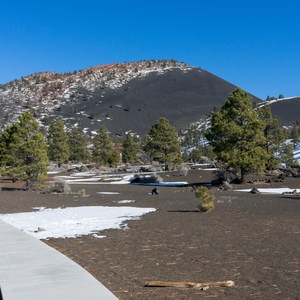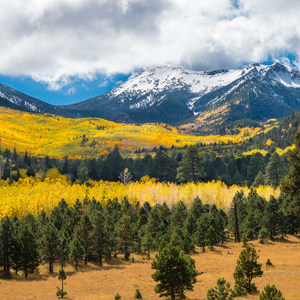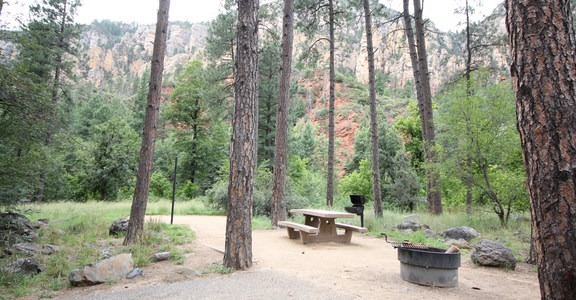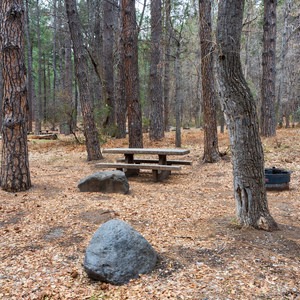Sunset Crater is a large cinder cone volcano that erupted about 1,000 years ago. This prominent mountain is the namesake of Sunset Crater Volcano National Monument, but another cinder cone exists within the park as well. That is Lenox Crater, which is a smaller neighbor of Sunset.
Hiking and climbing on Sunset Crater is prohibited in order to protect the fragile formation of new soil on its relatively young slopes. Therefore, if you want an elevated view of the Cinder Hills and greater volcanic landscape, the hike up Lenox Crater is your only option. The vista on top is definitely worth the short uphill hike to reach it. You'll find a panorama of the San Francisco Peaks, the tallest mountain in Arizona, and Mount Elden near Flagstaff, as well as many smaller volcanoes scattered around.
Lenox Crater Trail is an interesting lesson in geology and ecology as well. Lenox was probably shaped more like Sunset Crater in the past, but its upper cone has eroded and the crater filled in over time. Today it looks more like a rounded hill, but from the overlook on top you'll see the depression that used to be the crater. Another way to witness the effects of time is to compare the forest that covers Lenox to the relatively bare slopes of Sunset Crater. Just like Sunset, Lenox is essentially a pile of cinders, which are bits of lava that fell from the sky as they cooled during an eruption.
These rock fragments do not hold water well, and break down into soil very slowly, so it's hard for plants to take root and grow. Because Lenox Crater has been around for many hundreds of years longer than Sunset, ponderosa pines and other plants grow taller and more numerous on Lenox. You will enjoy the shade of these trees if you hike the dark cinders on a hot day. Be sure to stay on the designated trail, because venturing off will damage the precious soil and plants that so gradually take hold.
































Comments
Sign In and share them.